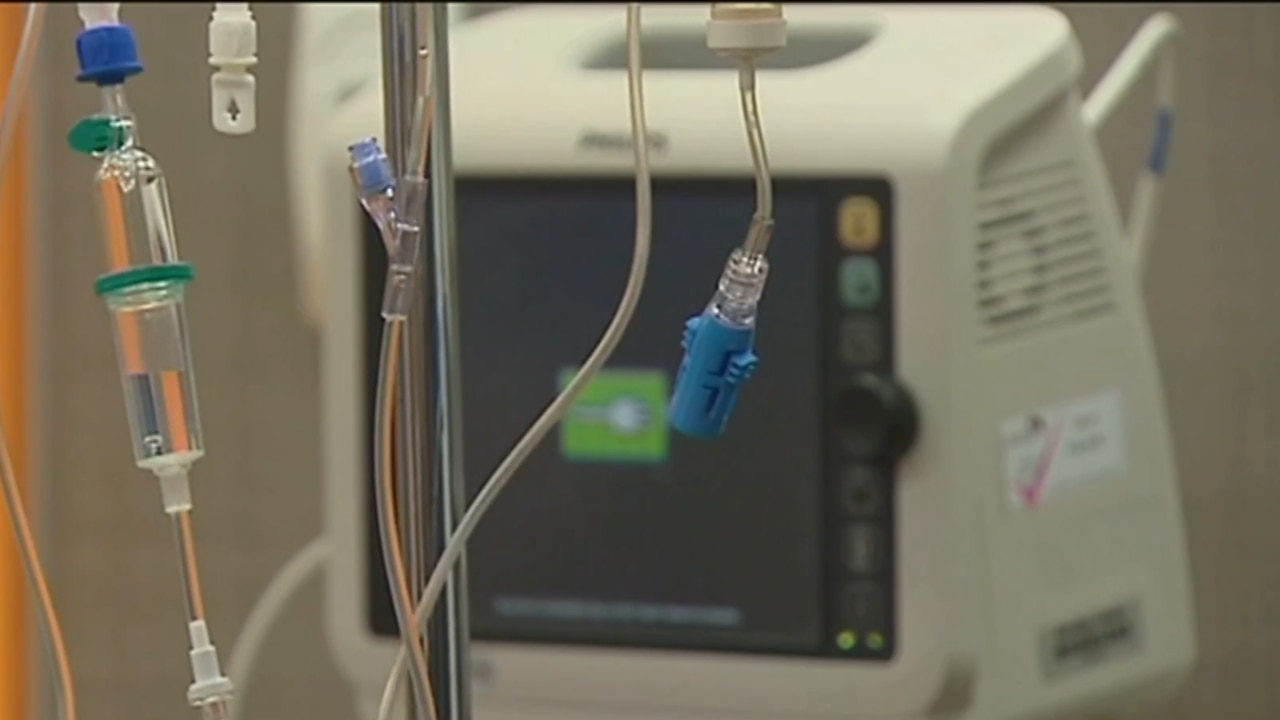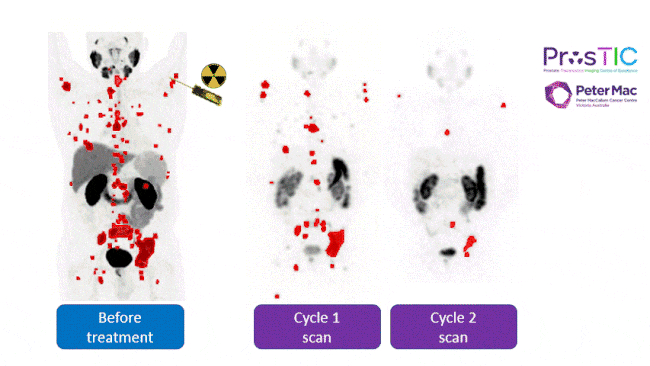Effective new therapy zeros in on prostate cancer
Many men with prostate cancer may soon be able to receive targeted treatment far more effective than chemotherapy or radiation.

Many men with prostate cancer may soon be able to receive targeted treatment far more effective than chemotherapy or radiation as Australian researchers trial powerful nuclear medicine that can attack cancer cells with pinpoint accuracy.
Researchers at the Peter MacCallum Cancer Centre in Melbourne have begun a clinical trial that looks to advance the huge leaps they have already made in prostate cancer treatment, which have doubled response rates in men who are given a liquid form of radiation to treat tumours.
Australian researchers pioneered the development of the nuclear medicine technique known as PMSA theranostics, which has achieved striking results in extending the lives of men who had exhausted conventional treatment.
The first PMSA theranostic therapy developed and trialled by Peter MacCallum, lutetium-177, was approved for wide use in the US and regulatory approval in Australia is pending, although some Australian men are receiving the new therapy in a suite of clinical trials and specialist centres.

“Theranostics uses radioactive molecules for both imaging and treatment, seamlessly aligning the two,” said Michael Hofman, director of Peter MacCallum’s Prostate Cancer Theranostics and Imaging Centre Of Excellence. “This enables a personalised treatment where we can see what we treat and select patients most likely to benefit. This results in an effective therapy using a liquid form of radiation that locks onto the cancer cells, delivering damaging radiation to tumours and sparing healthy tissues.”
The radioactive range of lutetium-177 is only one millimetre, so it is a highly targeted treatment that minimises damage to surrounding cells. “With this treatment, many men are experiencing zero side effects, and are also feeling better as the tumours shrink, reducing pain and fatigue,” Professor Hofman said.

The Peter MacCallum team has launched a clinical trial known as the VIOLET trial that aims to refine its testing of a new therapy called Terbium-161.
At the same time, cancer researchers Luc Furic and Mohammad Haskali at Peter Mac have received a $15m grant from the US Prostate Cancer Foundation to develop a theranostic that promises to be more precisely targeted.
Dubbed “alpha therapy”, the treatment known as lead-212 is between 10 and 100 times more powerful than lutetium-177, and will further increase the efficacy rates of the treatment. Alpha therapy will use lead-212 to target the tumour to within one-tenth of a millimetre. “The area of effect is reduced from a grain of rice down to the width of a human hair, sparing healthy cells with even greater potency to kill cancer cells,” Professor Hofman said.
The treatment developments come as new figures show the Australian health system’s spending on prostate cancer has hit $1.35bn annually, making it the most costly single disease to treat.
Analysis of new data from the Australian Institute of Health and Welfare by the Prostate Cancer Foundation of Australia shows that prostate cancer alone accounts for 20 per cent of cancer-related spending on the Pharmaceutical Benefits Scheme, at a cost of nearly $600m a year.
Melbourne man Brendan Lakic has been enrolled in the Violet trial and has so far received two infusions of Terbium-161 given six weeks apart. He received the therapy after his nuclear medicine scans identified him as eligible. Mr Lakic was diagnosed with advanced prostate cancer in March 2021 that had already spread to his bones. He initially had hormone treatment, followed by chemotherapy, but the cancer returned. “I really had no choice,” Mr Lakic said of his decision to enrol for the trial. “If I didn’t accept this treatment my situation was just going to get worse not better.”

Mr Lakic’s response to the radioactive therapy has been so positive so far that he may not need to undergo a full course of treatment. “Prior to my first treatment my PSA levels were 48, and I had the scan before the first treatment and there was apparently around 70 spots of tumour around my body,” he says. “After my first treatment my PSA level dropped to only about 30-odd, and after the second treatment it was 5.5.
“They even said to me that there as a chance after my next treatment that the tumours might be gone altogether.
“Unfortunately they said that invariably it comes back after 6 months or 12 months and if that does happen I will just basically have some more treatment. But who knows, it might not come back,”
As theranostic therapies advance, they are expected to be given to a much wider section of men with prostate cancer and may have broad application for other cancer types.
Prostate Cancer Foundation of Australian chief executive Anne Savage said the sharp rise in spending on prostate cancer demonstrated why the development of effective treatments such as PMSA theranostics were so vital.
“With an ageing and an increasing population, we can accurately predict that these costs will continue to increase as more than 24,000 men are newly diagnosed each year,” Ms Savage said.
“There are two excellent ways to reduce these costs, firstly by giving all men access to early and effective treatment with the best available medicines and therapies, and secondly by boosting investment in Australian-based prostate cancer research.”








To join the conversation, please log in. Don't have an account? Register
Join the conversation, you are commenting as Logout